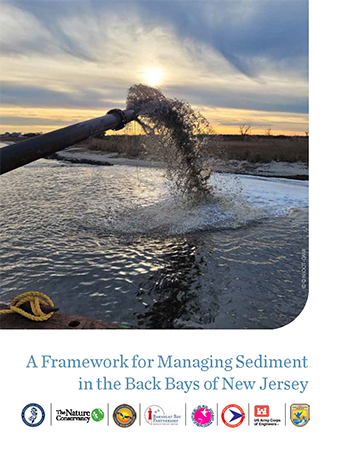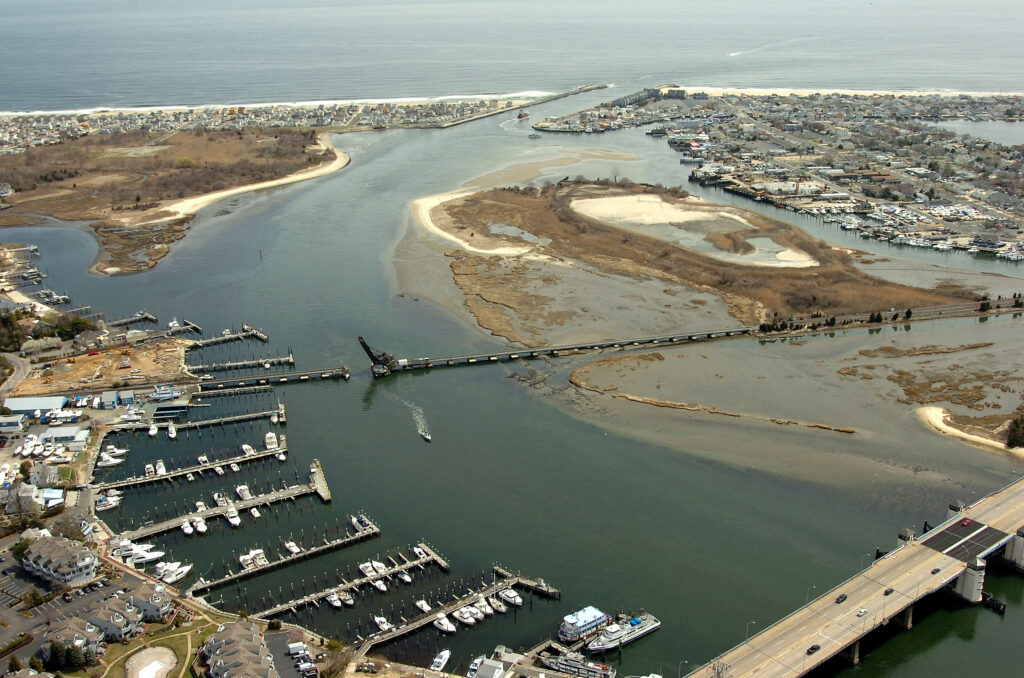
In the back bays of New Jersey, navigation channels must be routinely dredged to keep them clear for marine traffic. The dredged material was traditionally sent to disposal sites, removing the sediment from the subtidal zone where it originated. At the same time that channels are being maintained, tidal habitats are struggling to keep pace with rising sea level due to the loss and shortage of sediment. The loss of sediment puts at risk both the tidal habitats and the infrastructure and communities they protect. Both problems can be addressed by maximizing the practice of keeping sediment in the estuarine system whenever possible through the restoration, enhancement, and protection of habitats.
To develop best management practices for this approach in New Jersey’s Atlantic back bays, the New Jersey Department of Transportation (NJDOT) convened a Steering Committee of key state and federal agencies in 2022. The committee included representatives from the NJDOT’s Office of Maritime Resources, New Jersey Department of Environmental Protection, Barnegat Bay Partnership, U.S. Army Corps of Engineers, and U.S. Fish and Wildlife Service. Over the course of two years, the Committee gathered information to develop this document: A Framework for Managing Sediment in the Back Bays of New Jersey. The Framework’s goal is to explain how navigation dredging and the current practice of the beneficial use of dredged material in coastal New Jersey for community resilience and habitat restoration can be expanded, common challenges and recommended actions to address each challenge.
The process to develop the Framework was managed by an Administrative Team comprised of The Nature Conservancy, the Stockton University Coastal Research Center, and the Monmouth University Urban Coast Institute. To establish a shared understanding and inform deliberations, the Administrative Team worked with the Steering Committee and other experts to research key issues which were documented in the six white papers. The Framework and white papers are listed below.
- A Framework for Managing Sediment in the Back Bays of New Jersey
- Sediment Quantity & Dynamics
- Sediment Quality in the Atlantic Coastal Zone
- Dredging and Dredged Material Management in the NJ Atlantic Coastal Zone
- Opportunities for Restoration Using Dredged Material in New Jersey’s Back Bays
- New Jersey Atlantic Coastline Regional Sediment Management Framework Community Resilience White Paper
- Sediment Management in NJ Atlantic Back Bays State and Federal Regulations
Additional details about the Framework can be found in this NJDOT press release. Those with questions may contact the NJDOT Office of Maritime Resources or The Nature Conservancy in New Jersey at:

NJDOT Office of Maritime Resources
Nusrat Jahan, Project Manager
Nusrat.jahan@dot.nj.gov | 609.963.1699
The Nature Conservancy in New Jersey
Elizabeth Semple, Director of Coastal Programs
Email: elizabeth.semple@tnc.org
Bill Shadel, Coastal Projects Manager
Email: william.shadel@tnc.org